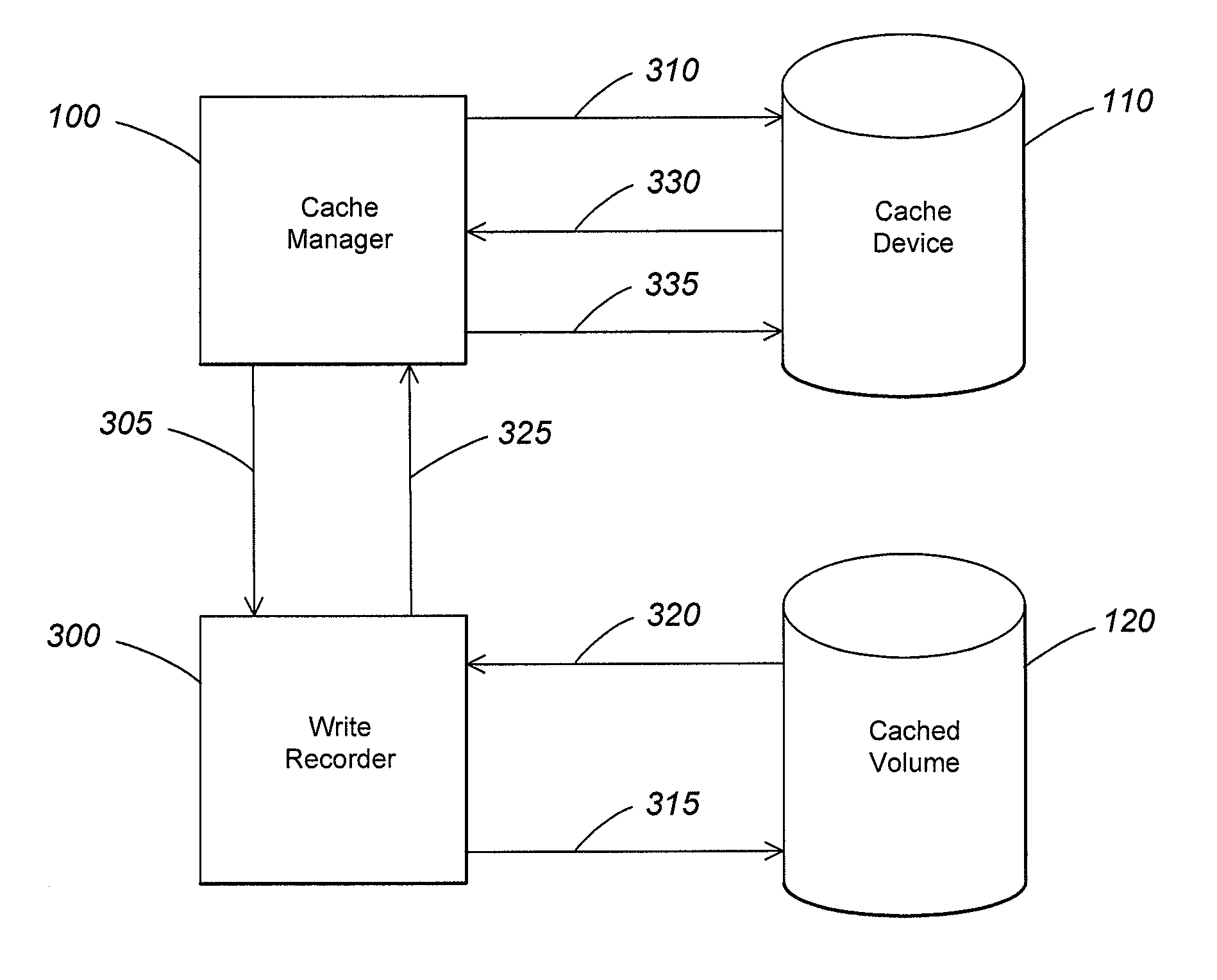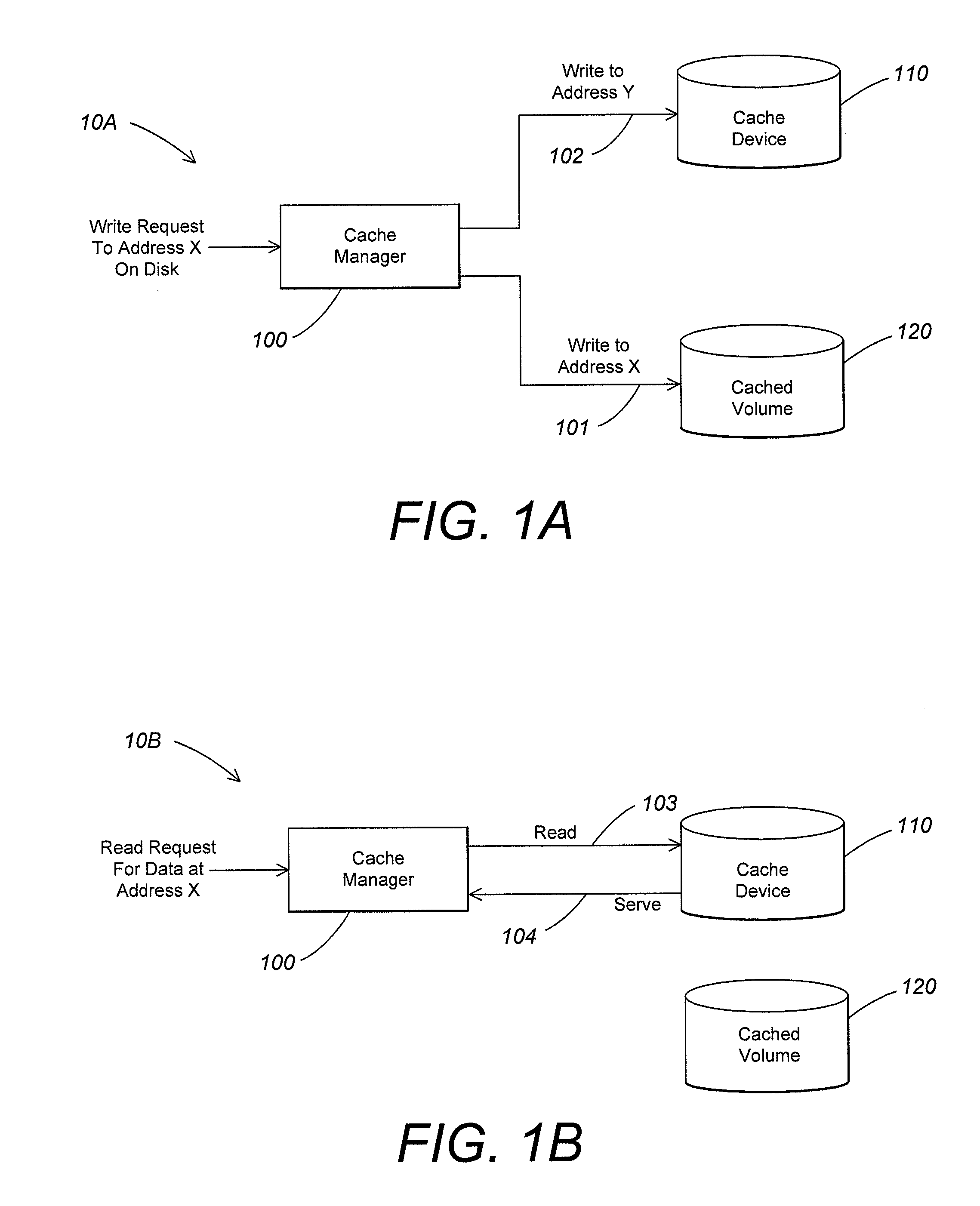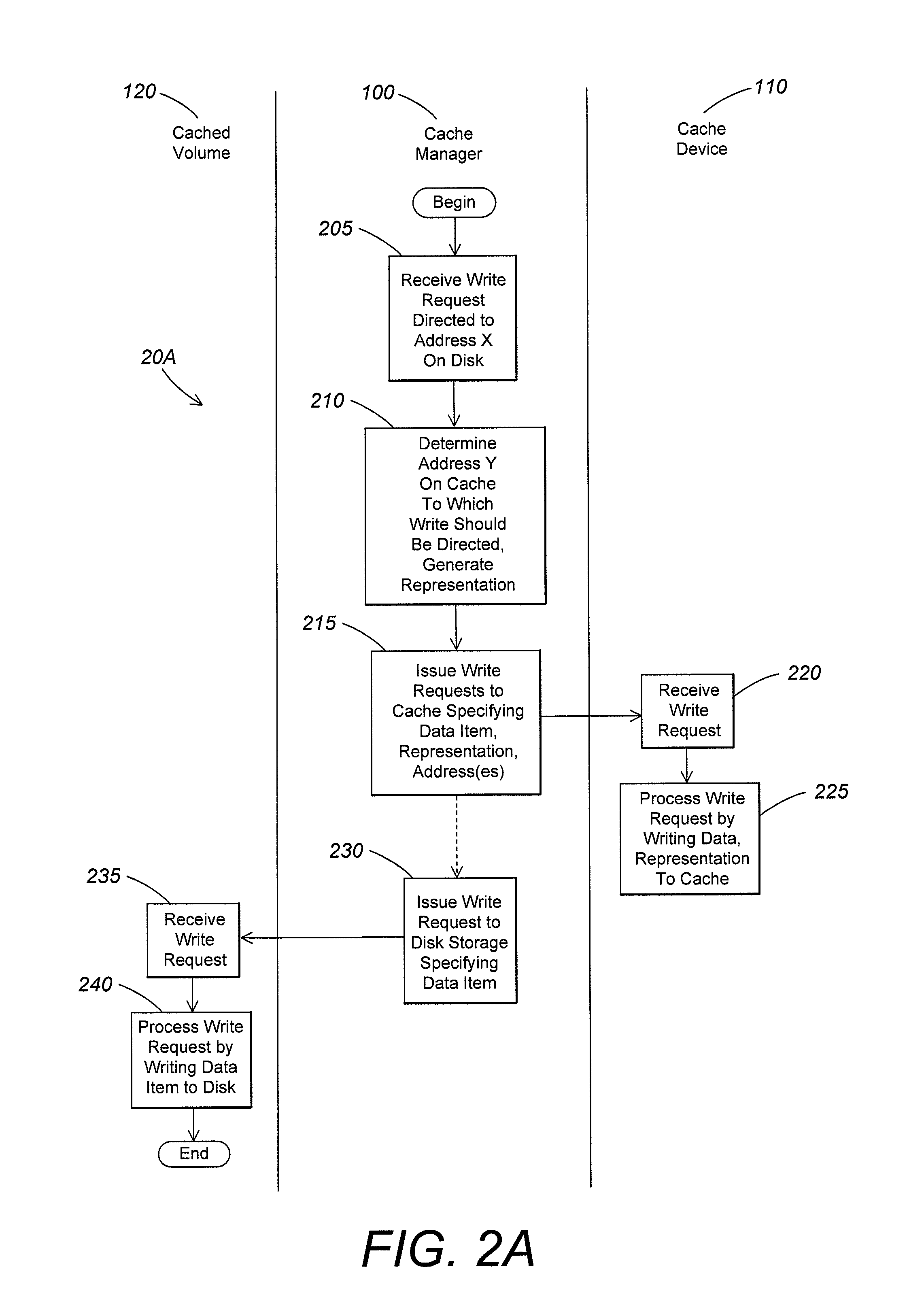Managing cache data and metadata
a cache data and metadata technology, applied in the direction of unauthorized memory use protection, memory adressing/allocation/relocation, instruments, etc., can solve the problems of reducing consuming significant processing resources, and effectively negating performance benefits, so as to improve the speed of i/o operations, the effect of increasing storage capacity and reducing the cost of operation
- Summary
- Abstract
- Description
- Claims
- Application Information
AI Technical Summary
Benefits of technology
Problems solved by technology
Method used
Image
Examples
Embodiment Construction
[0024]Some embodiments of the invention provide techniques for ensuring that cache contents accurately reflect the contents of disk storage across a power transition. For example, some embodiments provide a capability for ensuring that cache contents remain authentic and / or have not become stale across the power transition. Further, some embodiments provide techniques for managing cache metadata, to ensure that metadata has not been tampered with during a power transition. In addition, some embodiments provide a capability for storing cache metadata which may improve the efficiency with which both power transitions and normal operations may be performed. The sections that follow describe these embodiments in detail.
I. Verifying Cache Data Authenticity
[0025]When a computer experiences a power transition (e.g., is taken into standby or hibernate mode, or is rebooted), a cache device may be disconnected from the computer, and its contents may be altered (e.g., by a malicious hacker). F...
PUM
 Login to View More
Login to View More Abstract
Description
Claims
Application Information
 Login to View More
Login to View More - R&D
- Intellectual Property
- Life Sciences
- Materials
- Tech Scout
- Unparalleled Data Quality
- Higher Quality Content
- 60% Fewer Hallucinations
Browse by: Latest US Patents, China's latest patents, Technical Efficacy Thesaurus, Application Domain, Technology Topic, Popular Technical Reports.
© 2025 PatSnap. All rights reserved.Legal|Privacy policy|Modern Slavery Act Transparency Statement|Sitemap|About US| Contact US: help@patsnap.com



